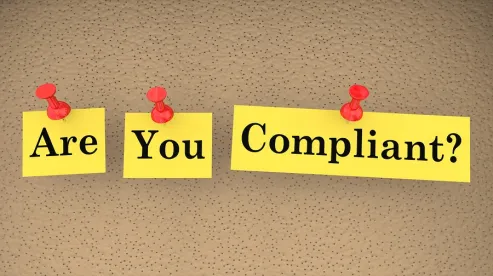The ability to effectively conduct internal investigations is essential to any business.
From fiscal year 2014 to fiscal year 2018, the number of whistleblower retaliation complaints filed with OSHA has increased by 29 percent. Between 2007 and 2017, retaliation claims filed with the EEOC nearly doubled. In fiscal years 2017 and 2018, the Justice Department recovered over $6.5 billion from False Claims Act cases. The recoveries, settlements, and defense costs in these matters are real.
Not only do internal investigations help ensure ongoing legal and regulatory compliance, they also give companies a chance to correct any mistakes and identify potential risk areas before they become true liabilities. They can also fortify future defenses and minimize risk in litigation about alleged corporate misconduct.
Given the stakes, we have prepared this two-part blog series exploring effective steps for internal investigations.
This first post explores five steps to ensure the company identifies complaints when they arise and establishes an appropriate framework for investigating those complaints.
- Train board members, executive leadership, and managers on identifying, receiving and ensuring investigation of internal complaints. Not every complaint is couched as a complaint. A complaint might be embedded in an email or conversation between an employee and her manager about how the business is run. It might be raised “informally,” but it is nonetheless a complaint. Because complaints are not always clear, managers (from line supervisors to board members) need to understand how to identify complaints in their various forms, take those complaints seriously, and ensure they are investigated by the right people (e.g., in-house counsel’s office, compliance, or human resources). Failure to identify complaints can have serious ramifications.
- Identify and articulate the purpose or goal of an investigation. A company should endeavor to understand why it is conducting the investigation. Every internal investigation should have the following goals: (a) obtain a full, objective understanding of the facts; (b) facilitate fact-based decision-making; (c) take prompt corrective action and confirm disclosure requirements; and (d) preserve evidence and a complete record.
- Account for attorney-client privilege considerations. In-house or outside counsel should be informed about most investigations to ensure proper legal advice and maintain privilege. If a company intends to use the investigation and its results to defend a lawsuit or allegation of wrongdoing, it should be prepared to disclose underlying investigation interview notes, factual conclusions, and remedial steps, if any. Courts will generally not allow a company to use an investigation as a shield against liability while asserting attorney-client privilege regarding supporting documents obtained during the investigation. This does not mean all communications to or from the investigator must be disclosed. Steps can be taken to ensure attorney-client privilege is maintained where appropriate. For instance, the investigator can report findings to the business for decision-making purposes and separately to counsel for legal advice or in anticipation of litigation. If an attorney acts in the role of fact-finder, organizations should not necessarily assume there will be attorney-client privilege in subsequent proceedings. Understanding attorney-client privilege issues early can help a company maintain privilege to the maximum extent possible.
- Identify the appropriate investigator(s). Not every complaint requires the same investigator. An investigator may be qualified in one area, but another investigator might be more qualified in a different area. Sometimes, it may be important to have counsel investigate the complaint to provide legal advice or if litigation is anticipated. An attorney investigator might also be employed as an expert witness down the road, depending on the circumstances. The investigator should be as independent as possible. The investigator should also understand the importance of attorney-client privilege and the outer limits of its protections. This can help guide the investigator on when and how to share certain information with appropriate parties. The investigator should ultimately be someone the company is comfortable representing it as a witness in any potential dispute that later arises.
- Determine the scope of the investigation. Any investigation should be broad enough in scope to establish independence of the investigator. The investigator should not be limited in a way that might lead a third party to believe the results were preordained. Most investigations should encompass the complaint and any circumstances and facts reasonably related to the complaint and its subject matter.
These five initial steps to the investigation process will help companies minimize or mitigate risks associated with internal complaints. Read Part 2 on conducting an internal investigation.




 />i
/>i
